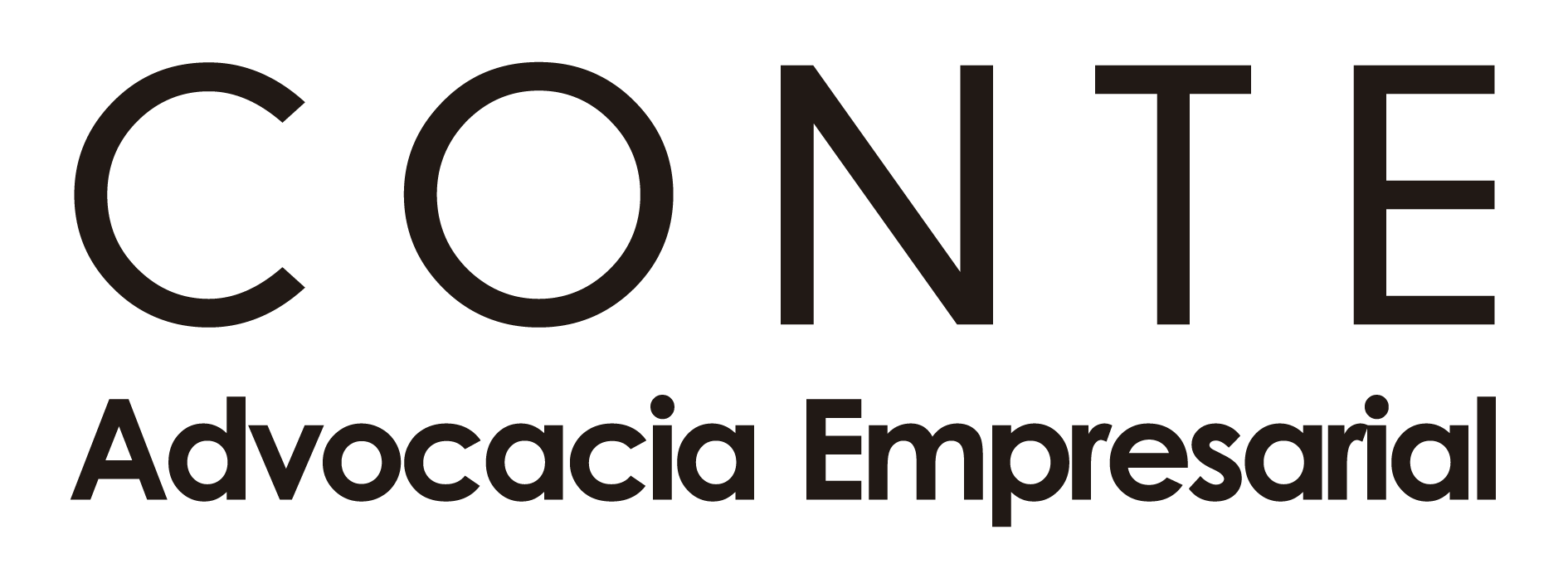Bookkeeping
Why Do Businesses Use Petty Cash Funds? 7 Reasons You Should Know
By aligning your petty cash management practices with your overall financial objectives, you can unlock synergies and maximise the impact of your cash reserves. Safeguarding your petty cash fund is a critical responsibility that requires a multi-faceted approach. From physical security measures to digital controls, let’s explore the strategies that can help protect your business’s cash reserve. Regularly reviewing the utilisation of your petty cash fund is essential for maintaining optimal efficiency.
The Best Order Fulfillment Companies For Ecommerce 2025
- The next shipment of milk from the supplier is scheduled to come within the next 48 hours.
- However, bigger companies will appoint a middle-level management employee to be the custodian.
- As you make each payment, you will need petty cash slips or a transaction list.
- Or, you may burn through your petty cash so quickly and often that it requires setting a higher replenishment point to ensure you do not run out at a vital point in the future.
Segregation of DutiesAssigning different individuals to handle cash disbursement, approval, and record-keeping minimizes the risk of fraud and errors. For example, the custodian distributes cash, while another employee reviews and approves transactions. This division of responsibilities enhances accountability and reduces conflicts of interest.
HighRadius Named an IDC MarketScape Leader for the Second Time in a Row For AR
Petty cash proves that sometimes, even the smallest tools can make the biggest difference. The petty cash balance is present on the company balance sheet with cash in the bank and cash on hand. Since petty cash funds can resolve scenarios with readily available cash, this can be considered as providing economic benefits. For this reason, your custodian will fill out a receipt when disbursing money to ensure that the total money will add up to the initial amount of your petty cash fund. Lastly, you must regularly review and reconcile your petty cash funds, so you can ensure that the money spent is always repaid. Be sure to investigate and review any discrepancies as soon as they are discovered.
Recording Petty Cash
The common small expenditures include office supplies, kitchen supplies, change for the clients, or other small purchases. If you’re looking to efficiently manage your petty cash fund, Grof Expense Management can simplify the process. With Grof, you can access your financial information on the go, saving both time and money. This powerful tool ensures accuracy, transparency, and control over your company’s expenses, helping you streamline financial management with ease. Petty cash facilitates employee reimbursements for small out-of-pocket expenses.
Everyday Business Expenses
Regularly auditing your petty cash fund, either through internal reviews or with the assistance of a third-party accounting professional, can help identify any discrepancies or irregularities. These audits not only safeguard your assets but also reinforce a culture of financial responsibility and transparency within your organisation. Petty cash refers to a small amount of cash kept on hand for minor business expenses. It functions as a convenient way to handle small transactions without disrupting financial operations. Hence, documenting all of your petty cash transactions maximizes the opportunity to take advantage of the tax deductions available for those expenses.
Creating, maintaining, and enforcing a robust petty cash management system establishes vital internal controls. This ensures accurate recording, reconciliation, and visibility into expenditures. While individual amounts may seem small, cumulatively, they impact financial statements. A few hours later, the HR team approaches Ananya to request funds for a surprise birthday cake for an employee celebrating their work anniversary. Raising a formal payment request for such a minor expense would be overkill, so petty cash comes to the rescue again.
Understanding Imprest Funds
A petty cash fund is a nominal amount of money a business keeps on hand for small expenses. Larger corporations often make petty cash disbursements by department, putting each team in charge of its own funds. The businesses are still using petty cash funds and will continue to use them to simplify small expenses and day-to-day operations.
With expert bookkeepers who are reliable, caring, and resourceful, you can trust our team. For example, if they typically keep $100 in petty cash, they may have a rule to replenish it once the available balance reaches $50. At a certain point, the petty cash will be running low and must be replenished so there’s enough available for future purchases.
Management
Instead of having petty cash on hand, your team can use Ramp’s corporate cards to cover everything from recurring bills to the smallest business expenses. When you return to the office, you put the change from the purchase back in the cash drawer and register the amount spent in a cash log, whether digital or paper. If all goes according to plan, accounting includes this cash log when they close the books.
- Since credit cards and e-payments are more common nowadays, petty cash funds are no longer necessary for a healthy business spending culture.
- Monitor the frequency and size of withdrawals to determine if the current fund size is appropriate.
- Start by deciding how much money you will need each day, both to make change for customers and to make small cash payments.
This flexibility allows you to seize opportunities and navigate unexpected circumstances effectively, regardless of payment preferences or requirements. If petty cash you use the petty cash account to make change for customers, you will need to do a mini-audit at the end of each day. Start with beginning balance, cash in, cash out compared to transactions, and ending cash.
How to Account for Gain and Loss Contingencies
Not only does this information boost investor trust and empower stakeholders to make data-driven decisions, but it also keeps your company compliant with regulatory standards. Situations like this are why many companies rely on financial consolidation software which automatically filters and deletes intra-group transactions. Alternatively, manual consolidation can lead to intra-group transaction oversights and inflated numbers, falsely indicating financial stability to stakeholders. Per IFRS 10 stipulations, a company cannot “cherry pick” a performance indicator and must report it as is. It introduces several market risks the company is susceptible to due to some of its strategic decisions, from equity price risks to interest rate risks, foreign currency risks, and commodity price risks. This information is of utmost importance to investors and regulators alike as it reflects the firm’s overall financial strategy and risk exposure transparently.
A contingency that might result in a gain usually should not be reflected in the financial statements because to do so might be to recognize revenue before its realization. However, when a new subsidiary is acquired, consolidation for its finances starts on the date control is gained, and the acquisition is reflected in subsequent financial statements to indicate ownership changes. Possible financial gain dependent on future events not entirely within a company’s control. A food manufacturing company discovers that a batch of its products may be contaminated and issues a recall. The company estimates the cost of the recall, including product refunds, logistics, and disposal, to be between $1 million and $3 million, with $2 million being the best estimate. When a contingency involves a range of possible outcomes and one amount within the range is considered the best estimate, that amount should be recorded.
For example, here is a “disclosures” excerpt screenshot from Berkshire Hathaway’s 2024 annual report. The ______ Recognition Principle is crucial for determining the correct timing to acknowledge revenues, which must coincide with the ______ process and gain realization. Updates to the ______ ______ may be required as the probability and projected value of the gain change.
Unlike loss contingencies, gain contingencies should not be accrued as doing so would result in recognizing revenue before it is realized. Disclosure should be made in the financial statements when the probability is high that a gain contingency will be recognized. The nature of gain contingencies often leads to a conservative approach in financial reporting. Accounting standards generally advise against recognizing gain contingencies until they are realized or virtually certain. This conservative stance helps prevent the overstatement of financial health and ensures that financial statements remain reliable and credible.
Interpreting the Principles of Gain Contingency
Moreover, companies should disclose any significant assumptions and judgments used in estimating the gain. This includes the methods and models employed, as well as the key variables and sensitivities. For example, if a discounted cash flow analysis was used, the discount rate and growth assumptions should be clearly stated. Such transparency not only enhances the credibility of the financial statements but also provides stakeholders with a deeper understanding of the potential risks and rewards.
- While the recognition of these contingencies in financial statements is often conservative, the disclosure requirements are more comprehensive.
- Contact us for help categorizing contingencies based on likelihood and measurability and disclosing relevant information in a clear, concise manner.
- Vaia is a globally recognized educational technology company, offering a holistic learning platform designed for students of all ages and educational levels.
Recognizing and Reporting Contingent Gains in Financial Statements
Since both conditions for recognizing a loss contingency are met (probable outcome and reasonable estimation of loss), XYZ Corporation should record a provision for the estimated loss on its financial statements. Accurately measuring contingent gains is a nuanced process that requires a blend of judgment, expertise, and analytical rigor. The first step in this process involves identifying the potential sources of these gains and understanding the specific conditions under which they might be realized. This often entails a deep dive into the underlying events, such as legal disputes, regulatory changes, or contractual agreements, to gauge the likelihood and timing of the gain. Changes in estimates can significantly affect financial statements, impacting reported earnings, liabilities, and equity.
Understanding how to recognize and report these contingencies is crucial for accurate financial statements. Proper handling ensures compliance with accounting standards and provides transparency to stakeholders. In simpler terms, a contingency is a potential event that could result in a financial impact on an entity, depending on whether or not certain future events take place. To help ensure transparency when reporting contingencies, companies must maintain thorough records of all contingencies. Proper documentation may include contracts, legal filings, and communications with attorneys and regulatory bodies. Legal and financial advisors can provide insights into the likelihood of contingencies and help estimate potential losses.
- When a potential gain is identified, companies must consider how it will be treated for tax purposes.
- Transparency in financial reporting is paramount, and this extends to the disclosure of gain contingencies.
- Reasonable estimability means that the amount of the potential loss can be determined with reasonable accuracy.
- However, when disclosing contingencies related to pending litigation, it’s important to avoid revealing the company’s legal strategies.
Gain Contingency Example: Expected Legal Settlement
However, when disclosing contingencies related to pending litigation, it’s important to avoid revealing the company’s legal strategies. Loss contingencies, on the other hand, are potential financial obligations that may arise from uncertain future events. GAAP requires that loss contingencies be recognized in the financial statements if they are both probable and can be reasonably estimated.
These steps ensure that the financial impact of potential losses is reasonably estimated and properly recorded in the financial statements. The measurement of contingencies under GAAP is based on the principle that the amount recorded should reflect the best estimate of the potential financial impact. When estimating the amount of a contingency, entities should consider all available information, including past experience, current conditions, and future expectations. The goal is to provide a reasonable and supportable estimate that faithfully represents the potential liability or gain. When it comes to financial reporting, transparency is paramount, and this is especially true for contingent gains.
Accounting Methods for Gain Contingencies
The estimation process involves consulting with legal counsel to assess the likelihood of an unfavorable outcome and the potential settlement amount. A manufacturing company is required to clean up environmental contamination at one of its sites. The company’s environmental experts determine that $2 million is the most likely amount. Based on historical data, the company estimates that 5% of the products sold will require warranty service, with an average repair cost of $200 per unit. These criteria ensure that only those contingencies that are likely to result in a financial impact and can be measured with sufficient reliability are recognized in the financial statements.
Here’s an overview of the rules for properly identifying, measuring and reporting contingencies to provide a fair and complete picture of your company’s financial position. Even if a gain is not recognized in the financial statements due to accounting conservatism, it may still need to be considered for tax planning and compliance purposes. Companies must ensure that they are not only compliant with financial reporting standards but also with tax regulations. This often requires close collaboration between the finance and tax departments to align the financial and tax reporting processes. For example, a company might need to prepare for potential tax liabilities or benefits that could arise from the realization of a gain contingency, even if the gain is not yet recognized in the financial statements.
Changes in estimates occur when new information or developments lead to a reassessment of the amount or timing of an asset or liability. GAAP requires that changes in estimates be accounted for prospectively, meaning they are reflected in the financial statements of the period in which the change occurs and future periods. GAAP requires entities to carefully assess contingencies to determine if they should be recognized in the financial statements and, if so, how they should be measured and disclosed. By the end of this article, readers will have a thorough understanding of how to calculate, record, and disclose contingencies in accordance with GAAP, ensuring accurate and transparent financial reporting. The treatment of the gain contingency changes from just a disclosure in the footnotes to a recognised monetary gain in the financial statements.
These references provide a solid foundation for understanding the principles and practical applications of accounting for contingencies under GAAP, ensuring accurate and transparent financial reporting. A company manufacturing electronic devices offers a one-year warranty on its products. Based on historical data, the company estimates that 3% of products sold will require repair or replacement under the warranty, with an average cost of $150 per unit. A Gain Contingency is a potential economic gain that arises from uncertain future events.
Once you’ve removed all intra-group dealings and accounted for gains and losses, it’s time to combine and consolidate. Removing intra-group transactions—like asset or service exchanges between subsidiaries— from your consolidated statement prevents double counting and misstatements. This means that though Alphabet owns many subsidiaries, only the first two—Google Services and Google Cloud—are significant enough to report on individually. The rest are included in the consolidated statement but lumped together into one broad category—Other Bets—due to their minimal bottom-line impact. If a company what is the journal entry to record a gain contingency in the financial statements is involved in a dispute with the IRS or state tax agency, it should assess whether it is likely to result in a payment and whether the amount can be estimated. Arises from past events, confirmation by future uncertain events not under entity control.
How To Figure Shorts & Over Entries In Accounting
A bet on the over means you think both teams will combine to score more goals, points, or runs than the total listed. Over and short—often called “cash over short”—is an accounting term that signals a discrepancy between a company’s reported figures and its audited figures. The term also is the name of an account in a company’s general ledger—the cash-over-short account. Cash discrepancy is one of the most common issues that businesses encounter when handling cash transactions. It happens when the recorded cash amount doesn’t match the actual cash on hand.
By buying the shares at a lower price (ideally) than the selling price, the investor closes the position, completing the short-selling transaction. Indeed, your long position starts losing money once the stock’s value drops below $50. You are reluctant to sell, but you’re also worried about the company’s short-term prospects due to an adverse news event, a disappointing earnings report, or a looming bear market. On the other hand, there are market conditions that seasoned traders can take advantage of and turn into a profit.
- Generally, short selling is a bearish investment method that involves the sale of an asset that is not held by the seller but has been borrowed and then sold in the market.
- While all three ratios have some overlap in their formulas and input values, they each offer a distinct measure of liquidity.
- A ratio below 1.0 means that its short-term debts outsize the cash on hand, which could point to potential insolvency.
- However, if the balance is at credit, it is treated as miscellaneous revenue instead.
- During periods of market instability, regulators have occasionally imposed temporary restrictions or bans on short selling to stabilize prices.
In this case one balance sheet asset (cash), has been increased by 1,488 when the cash is banked. Over and short—often called “cash over short”—is an accounting term that signals a discrepancy between a company’s reported figures (from its sales records or receipts) and its audited figures. The term also is the name of an account in a company’s general ledger—the cash-over-short account. Overall, understanding over and short is just the first step in addressing cash discrepancies.
Instead, you merely reserve the right to do so before the end of the options contract. In the evolving landscape of digital marketing, the emergence of specialized content creators has… In the realm of content marketing, whitepapers are a cornerstone, providing in-depth and…
For example, let’s imagine that X drops to $45 per share before beginning to rebound. In this case, you’d need to have at least $5,000 in your account to open a $10,000 short position. Additionally, the short seller is responsible for making dividend payments on the shorted stock in its entirety to whom the stock has been borrowed. However, having too high of a cash ratio isn’t necessarily a good thing.
Stablecoins are Redefining Finance as More Investors Buy USD Coin
The first step is to find what is cash short and over the cash and cash equivalents, which will be reported under the current or short-term assets section of the balance sheet. In practice, this journal entry will also incorporate other aspects of the underlying transactions. Accruing tax liabilities in accounting involves recognizing and recording taxes that a company owes but has not yet paid. This is important for accurate financial reporting and compliance with… Naked short selling is the practice of shorting a stock without actually borrowing the shares first.
In simple terms, Over and Short refers to the variance that arises when the amount counted during a physical count or cash reconciliation doesn’t match the amount recorded in the books. Double Entry Bookkeeping is here to provide you with free online information to help you learn and understand bookkeeping and introductory accounting. Chartered accountant Michael Brown is the founder and CEO of Double Entry Bookkeeping. He has worked as an accountant and consultant for more than 25 years and has built financial models for all types of industries. He has been the CFO or controller of both small and medium sized companies and has run small businesses of his own.
Presentation of the Cash Over and Short Account
It means selling an asset you don’t hold in your portfolio that you predict to drop in value later. Instead of purchasing the stock outright, you borrow it, sell it, and put the money aside. Then, after the price has dropped, you repurchase the stock and return it to the lender, keeping the difference as profit. In the U.S., short selling is a legal practice available to anyone with a margin account. Although Congress examined short selling closely when drafting the Securities and Exchange Act of 1934, it did not outright prohibit the practice. The primary risk of short selling is that your prediction could be wrong, and the stock price may increase instead.
This register includes all receipts from customers for over-the-counter sales. During closing the register, Red Co. counted its cash in the drawer, which amounted to $520. In practice, the cash over and short account can only have a debit or credit balance.
Trial Balance
Impact of Cash Discrepancies – Cash discrepancies can have a significant impact on a business. It can affect the accuracy of financial statements, which can result in incorrect tax filings, penalties, or even legal issues. It can also lead to financial losses, affect the reputation of the business, and damage relationships with customers.
Cash Over and Short acts as an Expense account when there is an shortage. It’s an “other expense” for you, not a normal expense like paying your bills. Cash Over and Short account is also used for Petty Cash overages and shortages. A short squeeze is when a stock’s value skyrockets, causing many short-sellers to franticly try to close their positions and buy back the stock, driving the price up even faster.
However, discrepancies occasionally occur, leading to differences between the recorded amount and the count of cash or inventory in hand. Timing differences occur when there is a delay between the time a transaction occurs and when it is recorded in the books. This type of discrepancy can be caused by a range of factors, such as delays in bank processing, delayed deposits, or delayed recording of transactions. Timing differences can lead to temporary discrepancies, but they can also result in long-term financial issues if not addressed promptly. Suppose a retail business starts each day with a cash balance of 100 in the cash register. During the day sales of 1,500 are entered into the register, and a cash count at the end of the day shows cash of 1,588 as summarized below.
Short selling regulation
- Cash discrepancy is one of the significant financial challenges that organizations face, particularly those that deal with cash payments.
- For example, the cash shortage needs the adjustment on the debit side while the cash overage needs the adjustment on the credit side.
- This discrepancy can occur in many ways, such as errors in recording transactions, theft, fraud, or miscounting.
- A cash ratio of 1.26 indicates that the cafe has more than enough cash currently on hand to take care of its short-term liabilities.
A larger balance in the account is more likely to trigger an investigation, while it may not be cost-effective to investigate a small balance. The cash over and short account is an excellent tool for tracking down fraud situations, especially when tracked at the sub-account level for specific cash registers, petty cash boxes, and so forth. A controller conducts a monthly review of a petty cash box that should contain a standard cash balance of $200. He finds that the box contains $45 of cash and $135 of receipts, which totals only $180. This cash shortfall is recorded as a debit to the cash over and short account (which is an expense) and a credit to the petty cash or cash account (which is an asset reduction).
The accounting for these transactions is also straightforward, as discussed above. If the cash recorded in the register is higher than the physical cash in hand, it falls under cash short. Thus, this account serves primarily as a detective control—an accounting term for a type of internal control that aims to find problems, including any instances of fraud, within a company’s processes. Internal tampering could cause a business to be over and short in its accounting. This term pertains primarily to cash-intensive businesses in the retail and banking sectors, as well as those that need to handle petty cash. If a cashier or bank teller errs by giving too much or too little change, for example, then the business will have a “cash short” or “cash over” position at the end of the day.
How to Identify Cash Discrepancy?
One of the most famous examples of short selling during the 2008 financial crisis was executed by Michael Burry, the hedge fund manager portrayed in the book and movie The Big Short. Burry recognized early signs of weakness in the U.S. housing market, particularly in the subprime mortgage sector, which involved risky loans to borrowers with poor credit. As potential losses on a short sale are unlimited, a margin call effectively limits how much loss your position can sustain. The major negative of margin loans is that they enable you to leverage an investment position. While this can bring the opportunity for extraordinary profits, it also multiplies your losses on the downside.
The 7 Best Sage Integrations Intacct, 50, 100 w Time Tracking + More for 2025
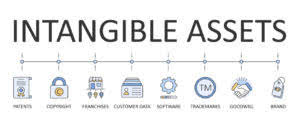
But if you’re a midsize company doing business overseas or engaging in complex transactions, Sage Intacct is the ideal software for you. Sage Intacct allows seamless integration with third-party apps to enable smooth business operations. You can integrate with applications, such as Gusto for payroll processing, Korona, for point-of-sale (POS) processes and Zapier, for expanded integrations. Every subscription to Sage Intacct comes with a free mobile app available on iOS and Android to help you control your accounts on the go. You can create and share invoices, track payments, track inventory, follow up with customers and record all expenses to keep your accounts balanced while you move.
Advanced features
While human error will always play some role in security breaches, you can be confident in your accounting platform when it comes to keeping your information safe. Yes, you can import data, such as customer and supplier details, opening balances, bank statements, charts and invoices, into the software from Excel or another data system. The support team is available to show you how to do this, and you can watch any of Sage Tacct’s video guides. A valued customer of Sage Intacct, Ground Control offers a great example of what can happen when a company automates its close cycle.
Functionality that ensures that two sets of records (usually the balances of two accounts) are in agreement.
For detailed and up-to-date pricing information, prospective users are encouraged to visit Sage Intacct Pricing. Renowned companies across sectors like tech and non-profit leverage its services. A member of the Sage Group, its headquarters reside in San Jose, California. It’s a good idea to set aside some time to review the Intacct product brochure, training resources, walkthroughs, and guides on the Sage website to familiarize yourself with the platform. We combine our own experience with the services we recommend, with reviews that come from verified users–just like you!
How much do users love Sage Intacct?

In Sage Intacct, invoicing focuses more on how it affects the accounts, so the bookkeeper must be familiar with all the accounts. In addition to the CFO Dashboard, there are role-based dashboards for project managers, controllers, A/P accountants, and accounts receivable (A/R) accountants. Overall, the CFO Dashboard is the most comprehensive dashboard, and we believe it’s the best one for monitoring the financial aspects of your business.
- I judge that businesses with a focus on detailed financial analytics and those in need of a scalable accounting solution would benefit most from Sage Intacct.
- Overall, the CFO Dashboard is the most comprehensive dashboard, and we believe it’s the best one for monitoring the financial aspects of your business.
- Sage Intacct drives the customer meetups, while the users drive the user group meetings (however, Sage Intacct staff can assist).
- You’ll also need to import any pre-existing invoices and bills and set up any recurring payments or subscriptions.
- This integration enhances efficiency, reduces errors, and optimizes resource allocation, making construction management smoother and more profitable.
While both platforms serve nonprofit and social impact organizations, Sage Intacct can provide reliable, enhanced cloud-based accounting capabilities. Features like AI integration and scalable architecture make it an attractive option for organizations seeking a modern, efficient financial management system. The interface is robust but might come off as accounting a tad complex for users new to financial software.

The process of recording, classifying, analyzing, summarizing, and allocating costs associated with a process
Customize the Data Quadrant according to the features and sentiments that matter most to you. One of my favorite aspects of Sage Intacct is its robust financial reporting capabilities. The option of Creating customizable, real-time reports and dashboards helps us gain insights into our financial and business health. See the intricate facets of Sage Intacct, a premier financial management software, as we evaluate its features, functionalities, and how it fares against its contemporaries. In this review, I’m going to share my analysis and evaluation from my hands-on experience with Sage Intacct. But first, if you’re just beginning your search for the best accounting tools, check out my picks for the best accounting software.

By business need
Sage Intacct gets all financial reports, including cash flow statements, sage intacct reviews balance sheet data, profit analysis, sales tax reports and 1099 vendor reports, ready for you in real-time. The insight into past and current trends in your business performance will help you make better business decisions necessary to grow your business. Sage Intacct lets accountants and business owners collaborate in the cloud and message each other within the software. Our partners cannot pay us to guarantee favorable reviews of their products or services.
Accounts Payable

You probably already know that Sage Intacct is among the most popular accounting tools out there, but you need to better understand what’s good (and not so good) about it. This means your data is stored externally (“in the cloud”), and you can access it from any device. Sage Intacct also facilitates collaboration across departments within your business, even internationally.
Troubleshooting and Support
Praises Journyx for its efficient project management, budgeting, and payroll automation, highlighting its quick adoption and strong integration with financial tools, with no reported drawbacks. This integration enhances efficiency, compliance, and productivity, making Lumber a powerful all-in-one workforce management solution. Praises Time Tracker’s ease of use and automation for simplifying time tracking but mentions high costs and frequent updates as drawbacks. Workyard’s Sage integration takes job tracking to the next level, providing real-time insights Restaurant Cash Flow Management into operations and finances to keep projects on time and on budget. ✅ Accurate Labor Cost Management – Workyard aligns labor costs with actual work hours, integrating with Sage to provide precise cost tracking and budget control.
What Are Preference Shares and What Are the Types of Preferred Stock?
Unlike common stock, preferred stock doesn’t come with the right to vote and has less potential to appreciate in price than common stock. Instead, the right to receive the dividend expires, and the company is not obligated to make up for missed payments in the future. Future developments, especially in technology such as blockchain and AI, may lead to the creation of new types of noncumulative financial instruments. These advancements could potentially make these instruments more complex and efficient, providing investors with a wider array of investment opportunities.
- Cumulative preferred stock offers more investor protection compared to non-cumulative preferred stock.
- Finance Strategists has an advertising relationship with some of the companies included on this website.
- This fixed nature of dividends ensures predictability and offers investors a sense of security in terms of income generation.
- As mentioned earlier, convertible preferred stock provides the option to convert preferred shares into a predetermined number of common shares.
- On the flip side, preferred stocks trade more like bonds, and thus don’t benefit much if the company experiences massive growth.
- Noncumulative Preference Stocks are the stocks that are issued by the companies, but then the issuer may skip or decide not to pay the dividends to the shareholders any longer.
- Preference shares, for instance, will generally have priority over the common shares, and will therefore be paid before the common shareholders.
Understand Noncumulative Preferred Stock: FAQs
As with any investment, it’s crucial for investors to thoroughly understand the terms and conditions of the non-cumulative preferred stock before adding it to their portfolio. Unlike common stockholders, preferred stockholders have limited rights, which usually does not include voting. Preferred stock combines features of debt, in that it pays fixed dividends, and equity, in Car Dealership Accounting that it has the potential to appreciate in price.
Limited Protection for Investors
- Stocks, also known as equity, are a security representing a holder’s proportionate ownership of a corporation.
- From the perspective of investors, non-cumulative preferred stocks may seem less attractive due to the lack of dividend assurance.
- However, this can also lead to a large cumulative dividend liability if the company defers these payments for too long.
- Non-cumulative preferred stock does not have this feature, and missed dividends are not carried forward.
- It provides a safeguard for the company’s cash flow, allowing it to skip dividend payments without accumulating debt.
Assessing factors such as risk, return potential, liquidity, and diversification benefits will aid in determining the optimal allocation of preferred stock within the portfolio. For investors interested in convertible preferred stock, careful evaluation of the conversion terms is essential. Changes in market sentiment, company performance, or broader economic conditions can impact the market value of preferred stock.
Part 1: Tell Us More About Yourself
Noncumulative preferred stock is a unique type of equity where dividends are not accrued if they are not declared. Investors in these stocks receive dividends before common stockholders but do not have the right to receive any missed dividends. Preference shares, also known as preferred shares, are a type of security that offers characteristics similar to both common shares and a fixed-income security. The holders of preference shares are typically given priority when it comes to any dividends that the company pays. In exchange, preference shares often do not enjoy the same level of voting rights or upside participation as common shares. Unpaid dividends are assigned the moniker “dividends in arrears” and must legally go to the current owner of the stock at the time of payment.
SHARE THIS WITH YOUR FRIENDS!
It is like equity because, unlike a bond, failing to pay preferred shareholders dividends does not put a company in default, and the stock can appreciate in price. Cumulative preferred stock guarantees that if the company temporarily suspends dividend payments, the unpaid dividends accumulate and must be paid before dividends can be distributed to common shareholders. Non-cumulative preferred stock provides flexibility in dividend payments, reduces financial obligation, and carries lower risk for investors. Noncumulative preferred stock is extremely rare, because it places the holders of the stock in the uncertain position of not having an assured income stream. Instead, the shares are effectively the same as common stock, where the issuance of dividends is at the prerogative of the board petty cash of directors.
Ask a Financial Professional Any Question
Still, if the company fails to pay the dividend on such preference shares to the shareholder in any year, then such dividend cannot be claimed by the shareholder in the future. Preferred shares have less potential to appreciate in price than common stock, and they usually trade within a few dollars of their issue price, most commonly $25. In addition, there are considerations to make regarding the order of rights should a company be liquidated. In most cases, debtholders receive preferential treatment, and bondholders receive proceeds from liquidated assets. Common stockholders are last in line and often receive minimal or no bankruptcy proceeds. Some types of preferred stock have a fixed end date in which, much like a bond, the original capital contributed is returned to shareholders.
- Investors should be aware of these potential pitfalls before incorporating preferred stock into their portfolios.
- Our writing and editorial staff are a team of experts holding advanced financial designations and have written for most major financial media publications.
- Please note that any such statements are not guarantees of any future performance and actual results or developments may differ materially from those projected.
- In addition, preferred stock can have a callable feature, which means that the issuer has the right to redeem the shares at a predetermined price and date as indicated in the prospectus.
- For income focused investors this favorable tax treatment can boost the overall return.
- From the company’s perspective, non-cumulative preferred stock provides a safeguard during financially turbulent times, as it is not obligated to pay out dividends in arrears if it skips or reduces dividends.
- This increases the risk, but the trade off is often greater income, and noncumulative preferred stock is of interest to investors willing to sacrifice some of the security advantage in return for higher income.
A financial professional will offer guidance based on the information provided and offer a no-obligation call to better understand your situation. The financial world is replete with diverse financial instruments, each with unique attributes designed to cater to specific investment strategies. Similarly, in insurance, noncumulative policies do not allow for the carryover of unused benefits or coverage from one period to the next. This term underscores the importance of utilizing allocated benefits within the designated timeframe.
What is your risk tolerance?
With preferreds, if a company has a cash problem, the board of directors can decide to withhold preferred dividends. The trust indenture prevents companies from taking the same action on their corporate bonds. Noncumulative refers to a type of preferred stock for which dividends are not accumulated over time.
5 Best Etsy Accounting Softwares 2025 Save & Automate

Whether you’re a solo entrepreneur or managing a team, Sage Accounting simplifies your business operations, making accounting HVAC Bookkeeping stress-free. Being an Etsy seller has a particular set of difficulties in handling finances. To ensure the business succeeds, the following factors should be considered.
Key Financial Reports to Know for Etsy Sellers
It facilitates business processes by streamlining workflows and automating compliance tasks, which gives you ample time for other matters. It has a system of centralized working in a place that collaborates with various other tools to give a complete bird’s eye view of the entire business. It helps in managing clients and employees and automates unearned revenue the processes for both of them. Finally, using just accounting software limits your ability to gain valuable e-commerce insights. Tools like Link My Books provide detailed analytics specific to Etsy sellers, like sales performance by product, region, or season. These insights are crucial for optimizing your listings, managing inventory, and scaling your business effectively.
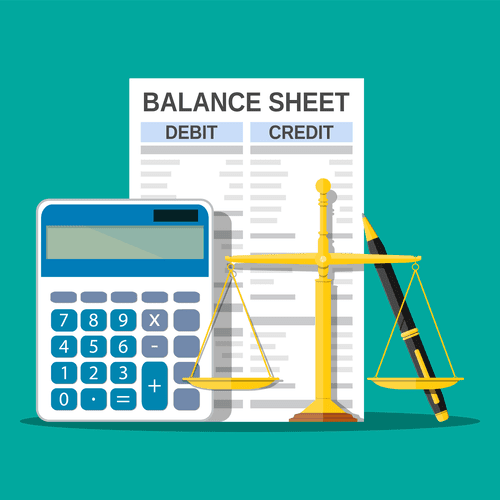
Step 4: Automate transaction syncing

While bookkeeping focuses on daily financial tracking, accounting involves analyzing financial data and preparing tax filings. Both are essential, but bookkeeping is the foundation that keeps an Etsy business running smoothly. Freshbooks is an accounting software that allows you to manage your finances and keep track of your income and expenses. If you’re using QuickBooks Desktop, Link My Books is not compatible with automation. Most small business owners choose cash-based accounting because it is easier to understand and handle.
- But luckily, you don’t need to be a numbers ninja to stay on top of your bookkeeping.
- The most straightforward bookkeeping format for beginners is a spreadsheet or a basic accounting tool that tracks income and expenses.
- Simple Start is best for freelancers and very small businesses with minimal accounting needs.
- This gives you the figures what you need for recording your Sales and Fees.
- You may not have to pay rent for a brick-and-mortar storefront each month, but Etsy fees can make a big dent in your earnings.
Which Etsy Reports Are Essential to Download for Bookkeeping
Link My Books, for instance, ensures your transactions are categorized with the correct tax treatment, making tax season less stressful. Understanding the financial health of your Etsy shop is necessary for making informed decisions and driving growth. The Financial Analytics feature provides you with detailed insights into your business’s performance. From tracking bookkeeping for etsy sellers profitability by product to analyzing your cash flow, this tool offers real-time data that helps you stay on top of your finances.
What is Etsy accounting?
To calculate the gross profit, deduct the costs of goods sold (COGS) from your revenue. Gross revenue and gross profit are often used together to assess your financial performance. EcomBalance’s eCommerce bookkeepers specialize within helping eCommerce companies with their bookkeeping and Etsy is one of their specialties. For example, if you were trying to calculate Etsy VAT, there would be different rates and factors to consider from region to region.
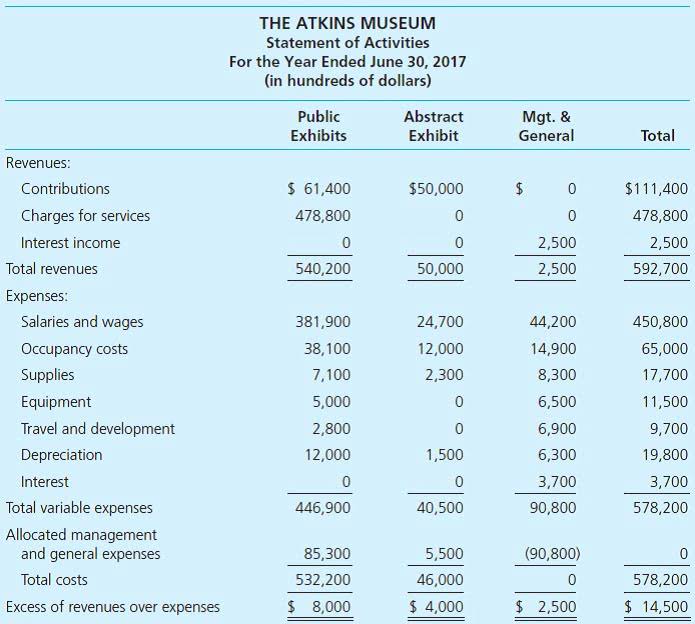
What is a Vendor: Definition and Types

Beyond the tools a company may use, it’s also critical to have a consistent system to track all inventory. Legal E-Billing Common methods include batch tracking, demand forecasting, and bulk shipments. Managing profit and loss in business accounting involves calculating revenue and finding ways to cut costs. Profits are earnings or cash in, and loss refers to anything the company has to pay for or money out—record profits and losses on a profit-and-loss statement or income statement.
Tax Accounting
- Fund accountants also have tax knowledge to ensure business tax compliance and investigate fraud to ensure investments are safe.
- As Edge Delta prepared for its first-year audit, it used Rippling Spend to build new automated financial policies and custom spending controls.
- Retailers with private-label brands also work with suppliers to produce goods under their name, such as grocery stores selling organic snacks.
- Through bookkeeping, retailers can track all expenses, from rent and utilities to employee wages and supplier payments.
- Choosing the right vendors reduces costs, ensures timely deliveries, and maintains product quality, all of which improve profitability and efficiency.
- From raw materials to specialized software, B2B vendors enable businesses to scale their operations and stay competitive.
- Key activities include purchasing goods, marking up their prices, and selling them to generate profit.
These professionals are trained to evaluate vendor options based on the company’s specific needs and goals. B2C (business-to-consumer) vendors sell goods or services directly to individual customers. These vendors are the ones that consumers interact with most frequently, offering products ranging from clothing and electronics to food and entertainment. B2C vendors are crucial in shaping consumer behavior and influencing market trends through direct sales, marketing, and customer engagement.
📆 Date: May 3-4, 2025🕛 Time: 8:30-11:30 AM EST📍 Venue: OnlineInstructor: Dheeraj Vaidya, CFA, FRM
Build strong relationships with suppliers and negotiate favorable payment terms. These negotiations can lead to discounts, extended payment windows, or bulk purchase deals that can positively impact cash flow. Consider using cloud-based receipt management apps or software that allow you to scan and upload paper receipts or receive digital receipts via email.

Tips for Effective Retail Bookkeeping
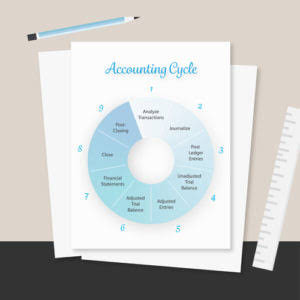
These systems generate real-time data, enabling retailers to make informed decisions about normal balance pricing, promotions, and stock levels. Setting up a good bookkeeping system is key for your wholesale business’s success. The right tools and techniques help keep your financial records accurate and current. Let’s explore the best accounting software, inventory management tips, and how to keep your financial records precise.
Net profit, often referred to as the bottom line, is the result of subtracting operating expenses from gross profit. It represents the company’s profit after all expenses have been accounted for. A positive net profit indicates profitability, while a negative net profit suggests a loss. Similar to assets, they are divided into current and noncurrent liabilities.
- It helps keep the right stock levels, cuts costs, and makes warehouse work smoother.
- Vendors, however, operate on more flexible, transactional relationships, buying products as needed based on market demand and consumer trends.
- Making accurate financial choices helps manage cash well and gives you a strategic advantage in the wholesale market.
- It is often used in legal cases, insurance claims, and business disputes.
- Sometimes these are dressed to falsely show the accurate and fair view in the financial statement.
- For example, internal audits provide a comprehensive view of the company’s financial health, ensuring that all assets and liabilities are accurately recorded.
Specialized Accountants vs General Accountants

For example, a restaurant supplier provides bulk ingredients like flour and vegetables to restaurant chains. A food vendor, such as a local bakery, buys smaller quantities and sells individual products to customers at a higher price. Suppliers handle bulk transactions and typically sell large quantities to manufacturers or distributors. Their pricing is structured for high-volume purchases, with discounts based on order size.

Collaborating with Bookkeepers or Accountants for Expert Assistance
That’s why most business owners nowadays use some kind of automated accounting system. All employees must complete a P45 or P46 form upon employment for tax purposes. Though there are many rules and regulations to respect when it comes accounting for distribution companies to accounting, many work fields, and economy exist.
Automated Financial Reporting: Top Benefits, Tools, and Best Practices
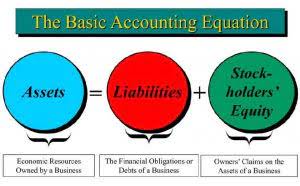
Regularly monitor the performance of your automated processes, tracking key metrics and seeking feedback from users. Continuously look for opportunities to optimize and refine your workflows based on insights gained from data analysis and user experiences. Stay updated on industry best practices and emerging technologies to ensure your automation strategy remains effective and competitive. Extract data from diverse financial statements, automate reconciliations, and generate reports in seconds. Schedule a personalized demo with Nanonets to learn how our solution can transform your financial reporting workflow. The first step is to take stock of all the financial processes you have in your company.
- If there’s an issue, team members can ask or answer questions by adding messages to any transaction in the app.
- By reallocating human resources from routine tasks to areas where they can add more value, organizations can optimize their workforce and potentially reduce costs.
- Automated financial reporting software provides templates that enable different sets of financial data to be stored in a consistent structure.
- The aim is to liberate oneself from the burdensome month-end stress, emancipating oneself from the clutches of error-prone, monotonous tasks.
Automate regulatory reporting and compliance checks
Fathom’s simple integrations with leading accounting software solutions, such as QuickBooks, Xero, and MYOB make setup is quick and easy for businesses who use these systems. Creating automated financial reports is quick and easy with Fathom’s pre-defined templates. Receive the latest financial reporting and accounting updates with our newsletters and more delivered to your inbox.
How to Calculate Rebates: A Complete Guide for Finance Professionals
Selecting the right business intelligence reporting software tool is critical for effective financial reporting. Organizations should prioritize solutions with an understandable report structure that values interactive interface, actionable insights and completely hands free. Customizable dashboards and user-friendly features, such as drag-and-drop options, enhance the overall user experience, making it easier for finance teams to navigate the software seamlessly. Learn and delve into finance reporting automation, equipped with insights on leveraging business intelligence software that propels organizations beyond conventional boundaries. The aim financial reporting automation is to liberate oneself from the burdensome month-end stress, emancipating oneself from the clutches of error-prone, monotonous tasks. Redirect your focus towards the substantial insights that empower you to lead the company into a progressive future.
Enhanced Data Analysis and Visualization Capabilities
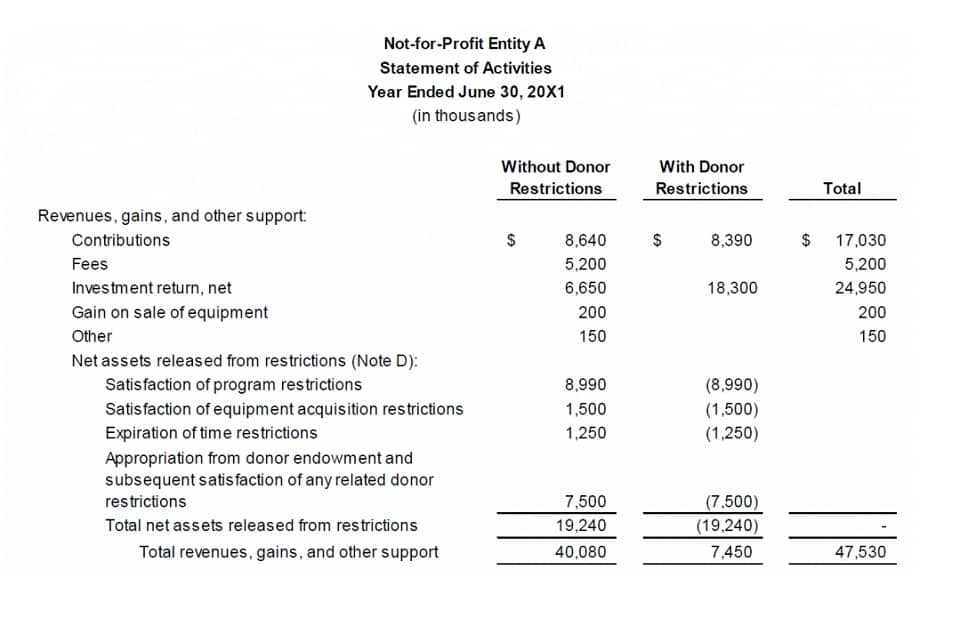
Plus, learn how Templafy’s document agents take it further—connecting your entire document ecosystem and automating brand, compliance, and content creation directly inside Microsoft 365. Cofidis Retail, a financial services company, relies heavily on PowerPoint for internal and external communication. Formatting issues, overlooked brand guidelines, and inconsistent, off-brand presentations were common. The second wave of GenAI is here, and it will belong to businesses that make AI a core part of their daily workflows.
- Collecting trial balance, consolidating the data according to specific rules and guidelines, and reporting the results to internal and external stakeholders, are tasks in the data consolidation process.
- While nearly all finance leaders are investing in AI, the depth and maturity of implementation varies significantly.
- By freeing specialists from mundane tasks, you can do more with a leaner team and set your sights on business growth.
- Additionally, it supports enhanced risk management by identifying deviations from expected patterns, allowing for quicker corrective actions.
- It can be automated using an accounting software system that can handle tasks such as data entry, reconciliation, and reporting.
- The accounts receivable dashboard visualizes accounts receivable by automatically connecting to your QuickBooks or Xero account.
How inefficient travel payment methods hurt global businesses
Provide finance teams with training on how to work alongside AI agents, interpret dashboards, and adjust workflows accordingly. As AI becomes more embedded in reporting, teams shift from task execution to value-added analysis and decision-making. Empowering your workforce with this knowledge improves user adoption and long-term success. Financial reporting software can help increase AP controls by implementing custom user roles and enhanced approval policies. By automating the approval process and setting unique roles and permissions for each system user, financial automation software helps regulate separation of duties. It also has wide usage, such as easy to use, allowing finance teams to handle data more efficiently.
- As a result, it contacts software provider that provides automated reporting for clients, for buying and installing its system of reporting that haze automation into it.
- As an M&A advisory firm, they handle large volumes of unstructured content, and transforming it into polished, high-quality documents under tight deadlines was a constant struggle.
- The gap between current adoption rates and future projections suggests we’re on the cusp of a major shift in how financial operations are conducted.
- Numbers need context, and financial statements without narratives can leave stakeholders guessing.
- It enhances businesses’ overall productivity allowing them to spend more time on insights obtained by automation of various stages of reporting procedure.
- This protects your company’s financial reports from being tampered with by bad actors internally or externally.
- These tools are designed to save time, improve accuracy, and provide actionable insights to FP&A teams, regardless of the specific platform used.

Today’s AI and machine intelligence can read and enter invoice data for review, flag potential issues like duplicate purchase orders, and sync with popular accounting software options. Let us assume that a retail company named Greeny, located in Old York City, has 150 stores throughout the eastern coast of America, having annual sales of $600 million. Since its network is huge, it often comes across various human errors leading to delivery issues and customer dissatisfaction. Hence, it decides to automate all its reporting systems with the help of automated reporting tools or Excel.
- Key stakeholders are presented with real-time financial information in a format that helps spot trends or patterns easily.
- Resembles R2R and focuses on the final steps of the reporting process, such as report generation and distribution.
- Automated financial report offers significant benefits for a businesses and advisors, such as increased efficiency, improved accuracy and decision-making enhancements.
- Now, let’s look at some of the best practices for automating financial reporting to ensure that your company meets all regulatory and industry standards.
- Automate end-to-end close processes across the enterprise regardless of technology or provider (SAP, Oracle, Microsoft, Workday, Infor).
HighRadius Named a Challenger In 2025 Gartner® Magic Quadrant™ for Financial Close and Consolidation Solutions
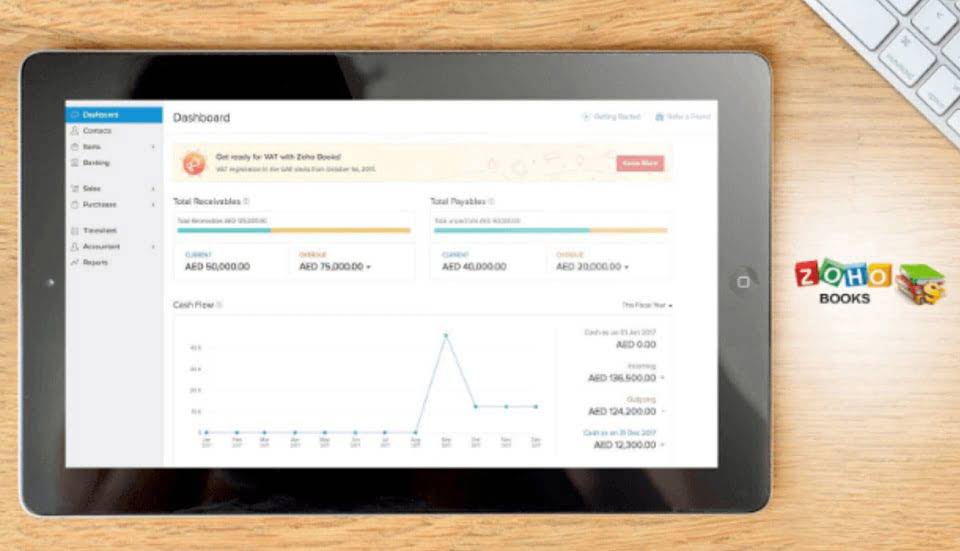
Here’s how they made financial reporting work for them (instead of the other way around). Keeping up with financial regulations is a full-time job, and the consequences of getting it wrong are expensive. AI doesn’t just speed up reporting—it ensures everything is Certified Public Accountant aligned with tax laws, accounting standards, and industry regulations.
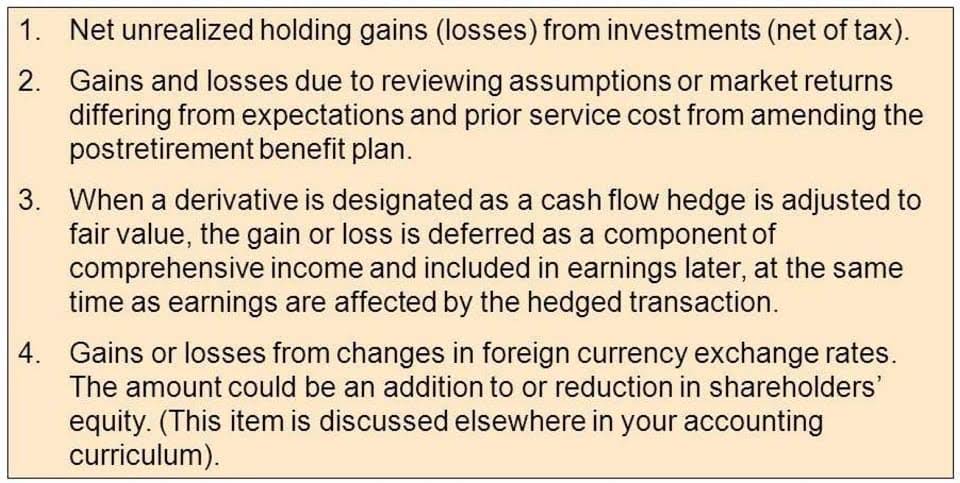
Every financial report generated by the software is added to a digital record, with the software making it possible to track all changes to financial data. AI improves accuracy by eliminating manual data entry, automatically reconciling transactions, and identifying discrepancies. Machine learning algorithms continuously refine data processes, reducing human error, and increasing reliability. There are many available, each offering unique features for different business sizes and https://www.bookstime.com/articles/remote-bookkeeping-service industries.
Adjusting Entries: Definition, Types and Examples

The spreadsheet typically has five sets of columns that start with the unadjusted trial balance accounts and end with the financial statements. In other words, an accounting worksheet is basically a spreadsheet that shows all of the major steps unearned revenue in the accounting cycle side by side. Accounting adjustments can also apply to prior periods when the company has adopted a change in accounting principle.

How to Test Completeness of Accounts Payable

In order to increase sales, many businesses extend credit to customers. The amounts owed by these customers are recorded in individual ledger accounts under the accounts receivable control account. Whichever method you use in recording the insurance payment, either would still result in similar account balances after posting the above adjusting entries.
- You will also learn the second trial balance prepared in the accounting cycle – the adjusted trial balance.
- As you can see, the worksheet lists all the trial balances and adjustments side by side.
- These include adjusting entries for deferred revenues and prepaid expenses.
- Then, by the end of January, when you have used up 1/12 of the rent paid, you will have to record your rent expense for the month.
- The matching principle ensures that revenues and the expenses incurred to earn them are reported in the same period.
- Think of it as doing the work but not yet sending the bill—yet you still need to recognize that revenue.
Types of Adjusting Entries
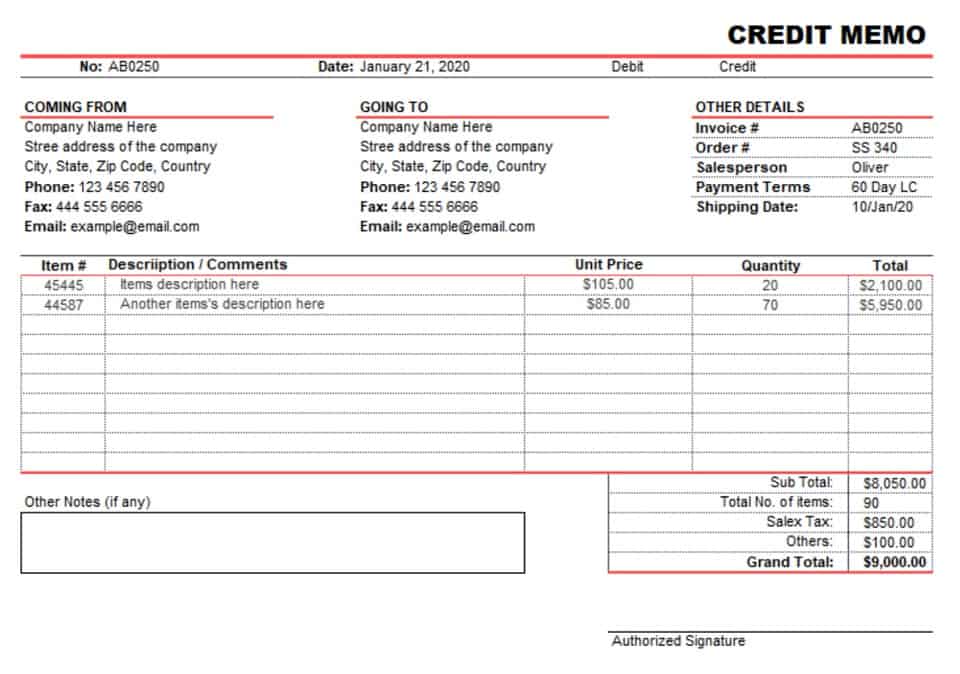
For example, if revenue is recorded before it’s earned, it can inflate your income, giving a Accounting for Churches false impression of profitability. On the other hand, missing expenses like unpaid bills can make your costs seem lower than they really are. Do your financial records truly capture what’s happening in your business? Missing or incorrect adjustments can distort your numbers, leading to bad decisions or even compliance problems. Adjustments are key to ensuring that your financial reports reflect reality, especially when dealing with unpaid expenses or income that hasn’t been recorded yet. In this guide, we’ll dive into what adjustments are, why they’re essential, and how they differ from reclassifications.
Purpose of Adjusting Entries
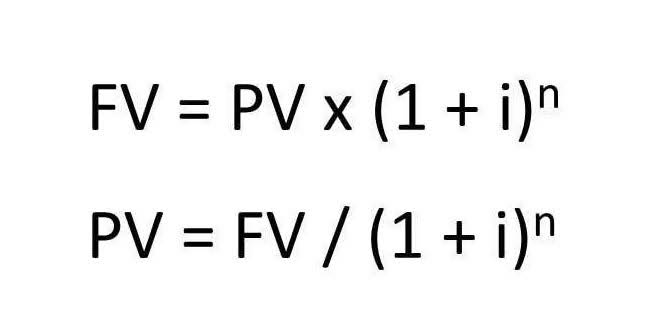
In August, you record that money in accounts receivable—as income you’re expecting to receive. Then, in September, you record the money as cash deposited in your bank account. The allowance for doubtful accounts lets you anticipate and account for these potential losses. You’ll debit Bad Debt Expense and credit Allowance for Doubtful Accounts.
- The accounting worksheet is essentially a spreadsheet that tracks each step of the accounting cycle.
- Prepaid expenses are payments that a company makes in advance for goods or services.
- In addition, it does not present the correct net realizable value of the accounts receivable.
- First, record the income on the books for January as deferred revenue.
- Many adjustments happen because improper accounting treatments were used in prior periods.
- By ensuring adjustments are made, you reduce errors and set your business up for smarter, data-driven decisions.
- Each time you pay depreciation, it reflects as an expense on your income statement.
- Adjustments often deal with unrecorded transactions or discrepancies that aren’t immediately obvious.
- The amount of bad debts are usually estimated by applying a percentage that is determined from bad debt history.
- These unpaid expenses are recorded in the payables account on the Company’s balance sheet.
- The Company will adjust journal entries in December 2019 to credit the revenue account and debit the unearned revenue account.
- If you have a bookkeeper, you don’t need to worry about making your own adjusting entries, or referring to them while preparing financial statements.
Examples of fixed assets are vehicles, equipment, machinery, furniture, buildings, and land. They usually have a useful life of more than a year and are classified as non-current assets in the statement of financial position or balance sheet. Under the direct write-off method, bad debts are recorded only when you are certain that you could no longer collect from the customer anymore with any legal means available. This is a simpler approach than the allowance method that small businesses could use.

Accrued Income, also called Accrued Revenue, represents income that is already earned but not yet received. To better understand the concept of adjusting entries, let’s briefly go through some important principles and assumptions below. No matter what type of accounting you use, if you have a bookkeeper, they’ll handle any and all adjusting entries for you. Please let us know if you need the adjusting entry for any other transactions not listed above adjustments in accounting examples by leaving a comment below. I hope you now have a clear understanding of how to make adjusting entries for various transactions after reading this article.
